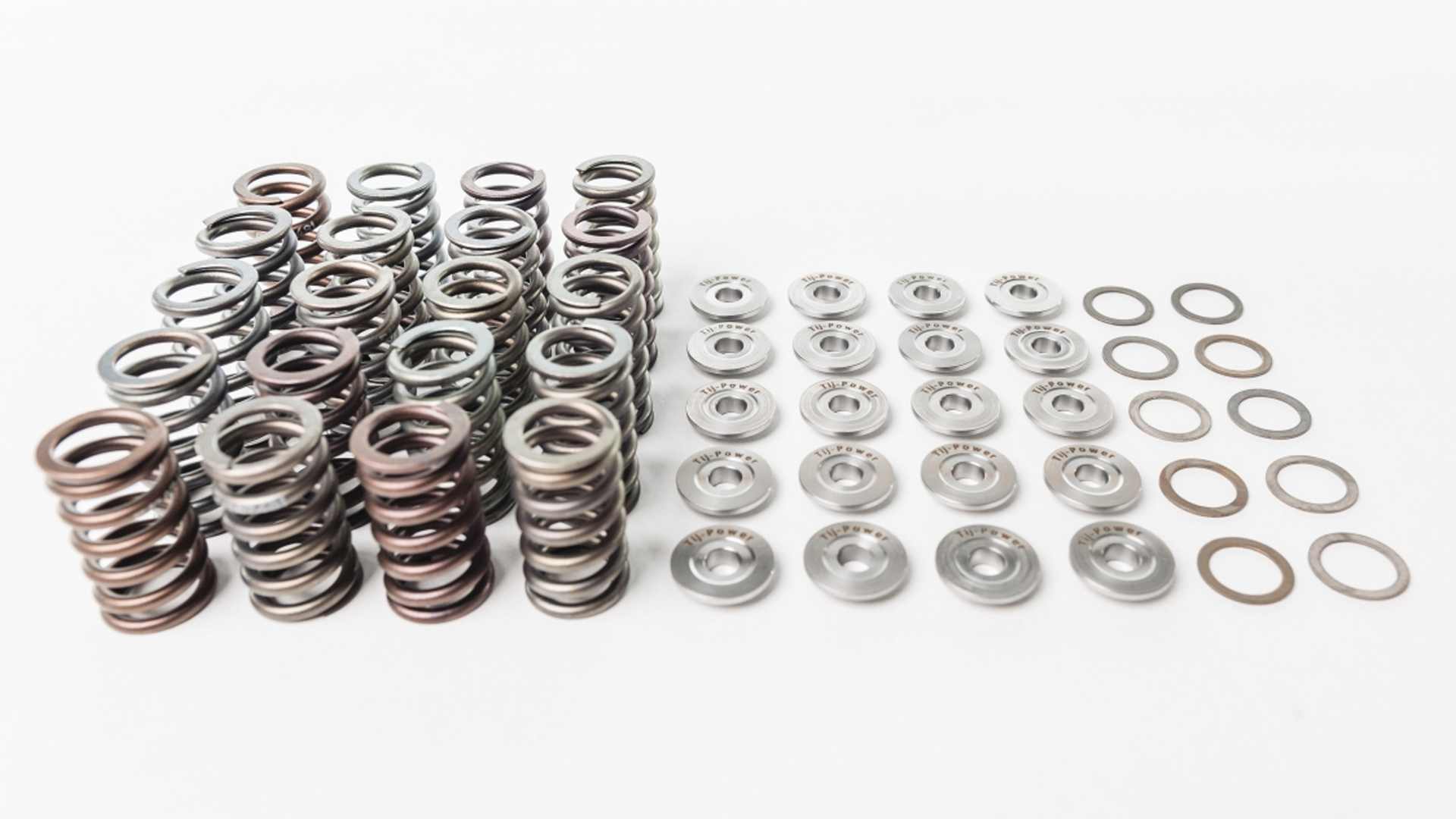
Valve springs are unsung heroes in internal combustion engines. While small in size, they play a vital role in controlling the motion of engine valves, directly influencing performance, fuel efficiency, and longevity. This article explores how valve springs work, their material science, types, key parameters, and how they’re engineered for both daily driving and high-performance racing.
1. The Function of Valve Springs in an Engine
Valve springs are responsible for closing the engine’s intake and exhaust valves. As the camshaft lobe rotates, it pushes the valve open against the force of the spring. Once the lobe passes, the stored energy in the compressed spring forces the valve to close, ensuring proper timing and cylinder sealing.
If the valve spring force is insufficient, valve float can occur—when the valve does not close completely or quickly enough at high RPMs, leading to power loss and potential engine damage (Smith & Liu, 2019).
2. Material Science and Manufacturing Techniques
(1) Common Materials
Valve springs are engineered for high-stress, high-temperature environments. Common materials include:
- Chrome-Silicon Steel (Cr-Si): High strength and excellent fatigue resistance.
- Chrome-Vanadium Steel (Cr-V): Offers durability and heat resistance, commonly used in performance engines.
- Titanium Alloys: Lightweight with excellent spring-back properties, used in motorsport applications.
(2) Manufacturing Processes
- Shot Peening: Introduces surface compressive stress to improve fatigue life.
- Heat Treatment: Refines grain structure and enhances mechanical properties.
- Nitriding or Coating: Increases surface hardness and corrosion resistance (Jackson, 2021).
3. Key Design Parameters and Performance Indicators
| Parameter | Description | Typical Range |
|---|---|---|
| Free Length | Uncompressed length of the spring | 35–70 mm |
| Installed Height | Length when installed between retainer and seat | Engine-specific |
| Spring Rate (k) | Force per unit deflection (N/mm) | 30–100 N/mm |
| Seat Pressure | Force at installed height | 300–600 N |
| Open Pressure | Force when valve is fully open | 800–1600 N |
Higher spring rates and pressures are used in high-RPM engines to prevent valve float, while lower values improve efficiency in standard engines (Turner & McKay, 2020).
4. Types of Valve Springs
Valve springs come in various designs depending on engine requirements:
- Single Springs: One coil; used in low- to mid-performance engines.
- Dual Springs: Inner and outer coils provide redundancy and prevent surge.
- Beehive Springs: Tapered design reduces mass and improves damping.
- Conical Springs: Compact and light, ideal for high-RPM racing applications (Olsen, 2023).
Each type balances mass, stiffness, and damping based on the engine’s operating envelope.
5. Inspection, Maintenance, and Replacement
(1) Signs of Wear or Failure
- Valve float or misfires at high RPMs
- Broken or cracked coils
- Loss of seat or open pressure
(2) Maintenance Practices
- Measure seat and open pressures regularly using a valve spring tester.
- Replace springs when wear exceeds manufacturer tolerances.
- For high-performance engines, consider upgrading springs during camshaft swaps.
According to testing by the Journal of Engine Technology, degraded valve spring performance can reduce engine output by up to 12% in severe cases (Nguyen et al., 2022).
Built for Precision, Designed for Performance
From standard sedans to high-revving race cars, valve springs are precisely engineered to endure extreme stress while maintaining reliable valve control. Selecting the correct type, material, and maintaining proper spring condition is essential for achieving peak engine performance, efficiency, and durability. The more we understand these small but mighty components, the more we can appreciate their indispensable role in every combustion-powered journey.
References
- Smith, A., & Liu, D. (2019). Valve Dynamics in High-Performance Engines. SAE International Journal of Engines, 12(4), 445-460.
- Jackson, M. (2021). Surface Treatment and Fatigue Life of Automotive Springs. Materials Engineering Today, 18(3), 112-123.
- Turner, J., & McKay, R. (2020). Spring Rates and Valve Control at High RPM. Engine Performance Engineering, 22(1), 67-79.
- Olsen, B. (2023). Modern Valve Spring Design for Racing Applications. Automotive Engineering Review, 20(2), 89-97.
- Nguyen, T., et al. (2022). Engine Output Reduction Due to Valve Spring Fatigue. Journal of Engine Technology, 30(5), 210-223.

I really need this blog, it solved my doubts. How can I contact you?
How can I help you? You can contact us directly from the website